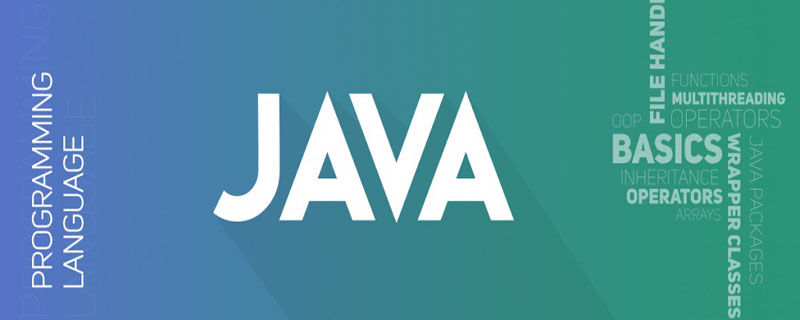How to implement reading and reading of files in java

一、文档读取
1、将文件读取为String
public static String TxtToString(File file) {
String result = "";
try {
BufferedReader br = new BufferedReader(new FileReader(file));
//构造一个BufferedReader类来读取文件
String s = null;
while ((s = br.readLine()) != null) {//使用readLine方法,一次读一行
result = result + "\n" + s;
}
br.close();
} catch (Exception e) {
e.printStackTrace();
}
return result;
}2、将文件读取为List集合(按行)(免费视频教程分享:java免费视频教程)
public static List<String> TxtToStringList(File file) {
List<String> result = new ArrayList<>();
try {
if (!file.exists()){
return null;
}
BufferedReader br = new BufferedReader(new FileReader(file));
//构造一个BufferedReader类来读取文件
String s = null;
while ((s = br.readLine()) != null) {//使用readLine方法,一次读一行
result.add(s);
}
br.close();
} catch (Exception e) {
e.printStackTrace();
}
return result;
}二、Java存储文件
1、将list按行写入到txt文件中
public static void writeFileContext(List<String> strings) throws Exception {
File file = new File("D:\\IntellijIDEAProject\\KeChenSheJi\\data\\WordLibrary_index");
//如果没有文件就创建
if (!file.isFile()) {
file.createNewFile();
}
BufferedWriter writer = new BufferedWriter(new FileWriter
("D:\\IntellijIDEAProject\\KeChenSheJi\\data\\WordLibrary_index"));
for (String l:strings){
writer.write(l + "\r\n");
}
writer.close();
}2、按照名字将string类型的集合存入文件
public static void writeFileContext_Find(List<String> strings,String name) throws Exception {
File file = new File("D:\\IntellijIDEAProject\\KeChenSheJi\\data\\wordIndex");
//如果没有文件就创建
if (!file.isFile()) {
file.createNewFile();
}
BufferedWriter writer = new BufferedWriter(new FileWriter
("D:\\IntellijIDEAProject\\KeChenSheJi\\data\\wordIndex\\"+name));
for (String l:strings){
writer.write(l + "\r\n");
}
writer.close();3、将Sting类型的list集合按文件地址存储
public static void writeFileContext_Found(List<String> strings,String filename) throws Exception {
File file = new File(filename);
//如果没有文件就创建
if (!file.isFile()) {
file.createNewFile();
}
BufferedWriter writer = new BufferedWriter(new FileWriter
("D:\\IntellijIDEAProject\\KeChenSheJi\\data\\file_index\\"+file.getName()));
for (String l:strings){
writer.write(l + "\r\n");
}
writer.close();
}相关文章教程推荐:java快速入门
The above is the detailed content of How to implement reading and reading of files in java. For more information, please follow other related articles on the PHP Chinese website!

Hot AI Tools

Undresser.AI Undress
AI-powered app for creating realistic nude photos

AI Clothes Remover
Online AI tool for removing clothes from photos.

Undress AI Tool
Undress images for free

Clothoff.io
AI clothes remover

AI Hentai Generator
Generate AI Hentai for free.

Hot Article

Hot Tools

Notepad++7.3.1
Easy-to-use and free code editor

SublimeText3 Chinese version
Chinese version, very easy to use

Zend Studio 13.0.1
Powerful PHP integrated development environment

Dreamweaver CS6
Visual web development tools

SublimeText3 Mac version
God-level code editing software (SublimeText3)

Hot Topics
 1386
1386
 52
52
 Perfect Number in Java
Aug 30, 2024 pm 04:28 PM
Perfect Number in Java
Aug 30, 2024 pm 04:28 PM
Guide to Perfect Number in Java. Here we discuss the Definition, How to check Perfect number in Java?, examples with code implementation.
 Weka in Java
Aug 30, 2024 pm 04:28 PM
Weka in Java
Aug 30, 2024 pm 04:28 PM
Guide to Weka in Java. Here we discuss the Introduction, how to use weka java, the type of platform, and advantages with examples.
 Smith Number in Java
Aug 30, 2024 pm 04:28 PM
Smith Number in Java
Aug 30, 2024 pm 04:28 PM
Guide to Smith Number in Java. Here we discuss the Definition, How to check smith number in Java? example with code implementation.
 Java Spring Interview Questions
Aug 30, 2024 pm 04:29 PM
Java Spring Interview Questions
Aug 30, 2024 pm 04:29 PM
In this article, we have kept the most asked Java Spring Interview Questions with their detailed answers. So that you can crack the interview.
 Break or return from Java 8 stream forEach?
Feb 07, 2025 pm 12:09 PM
Break or return from Java 8 stream forEach?
Feb 07, 2025 pm 12:09 PM
Java 8 introduces the Stream API, providing a powerful and expressive way to process data collections. However, a common question when using Stream is: How to break or return from a forEach operation? Traditional loops allow for early interruption or return, but Stream's forEach method does not directly support this method. This article will explain the reasons and explore alternative methods for implementing premature termination in Stream processing systems. Further reading: Java Stream API improvements Understand Stream forEach The forEach method is a terminal operation that performs one operation on each element in the Stream. Its design intention is
 TimeStamp to Date in Java
Aug 30, 2024 pm 04:28 PM
TimeStamp to Date in Java
Aug 30, 2024 pm 04:28 PM
Guide to TimeStamp to Date in Java. Here we also discuss the introduction and how to convert timestamp to date in java along with examples.
 Java Program to Find the Volume of Capsule
Feb 07, 2025 am 11:37 AM
Java Program to Find the Volume of Capsule
Feb 07, 2025 am 11:37 AM
Capsules are three-dimensional geometric figures, composed of a cylinder and a hemisphere at both ends. The volume of the capsule can be calculated by adding the volume of the cylinder and the volume of the hemisphere at both ends. This tutorial will discuss how to calculate the volume of a given capsule in Java using different methods. Capsule volume formula The formula for capsule volume is as follows: Capsule volume = Cylindrical volume Volume Two hemisphere volume in, r: The radius of the hemisphere. h: The height of the cylinder (excluding the hemisphere). Example 1 enter Radius = 5 units Height = 10 units Output Volume = 1570.8 cubic units explain Calculate volume using formula: Volume = π × r2 × h (4
 How to Run Your First Spring Boot Application in Spring Tool Suite?
Feb 07, 2025 pm 12:11 PM
How to Run Your First Spring Boot Application in Spring Tool Suite?
Feb 07, 2025 pm 12:11 PM
Spring Boot simplifies the creation of robust, scalable, and production-ready Java applications, revolutionizing Java development. Its "convention over configuration" approach, inherent to the Spring ecosystem, minimizes manual setup, allo




